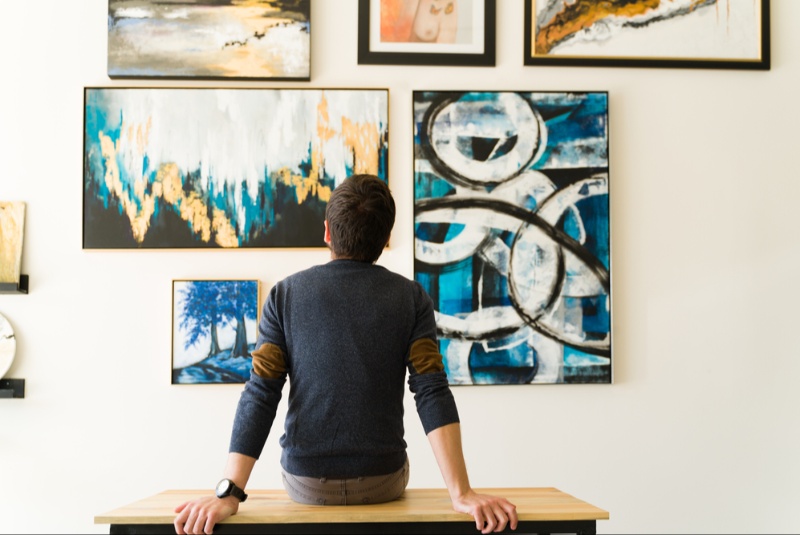Exploring the Therapeutic Benefits of Art
Art has long been recognized as a powerful tool for reducing stress and promoting mental well-being. Engaging in creative activities such as drawing, painting, or sculpting allows individuals to express their emotions in a non-verbal way, providing an outlet for stress and anxiety. The process of creating art can be meditative, helping to quiet the mind and focus on the present moment. Whether you're a seasoned artist or a beginner, the act of creating can serve as a therapeutic release, offering a much-needed break from the demands of daily life and fostering a sense of calm and relaxation.
Art as a Form of Mindfulness
Mindfulness is the practice of being fully present in the moment, and art is an excellent way to cultivate this mindset. When you immerse yourself in a creative project, whether it's painting a landscape or sketching a design, you become focused on the process, allowing thoughts of stress and worry to fade into the background. Art encourages you to concentrate on the here and now, similar to meditation. This mindful engagement with creativity can help reduce stress by promoting relaxation and encouraging a break from the mental chatter that often contributes to anxiety.
Using Colors to Influence Mood
Color has a significant impact on our emotions, and incorporating color therapy into your artwork can be an effective way to manage stress. For example, cool colors like blue and green are known to evoke feelings of calm and tranquility, making them ideal for stress relief. Warmer colors like yellow and orange can uplift your mood and inspire creativity. When creating art, consider how different colors make you feel and use them intentionally to influence your emotional state. Experimenting with color can be a fun and therapeutic way to explore your emotions and reduce stress through artistic expression.
The Power of Doodling and Drawing
Doodling and drawing are simple, accessible forms of art that can help reduce stress anytime, anywhere. These activities require little preparation and can be done with just a pen and paper. Doodling allows your mind to wander while your hand is engaged in repetitive, soothing motions, which can help release tension and improve focus. Drawing, on the other hand, can provide a structured outlet for creative expression, allowing you to channel your emotions into images. Both practices encourage relaxation and can act as a form of mental escape, helping to clear your mind of stress.
Engaging in Abstract Art for Emotional Release
Abstract art, which focuses on shapes, colors, and forms rather than realistic depictions, offers a unique way to release emotions and reduce stress. This form of art encourages free expression without the pressure of perfection or accuracy, allowing you to let go of expectations and simply enjoy the process. Abstract painting or drawing can be particularly therapeutic because it invites experimentation and spontaneity. The act of creating abstract art can help you express complex emotions that may be difficult to verbalize, providing a healthy outlet for stress and encouraging emotional release in a non-judgmental space.

Group Art Activities for Social Connection and Stress Relief
Participating in group art activities, such as painting classes or art therapy workshops, can be an excellent way to reduce stress while fostering social connection. Creating art in a group setting encourages collaboration, support, and the sharing of ideas, which can help alleviate feelings of isolation and stress. The social aspect of these activities provides an opportunity to connect with others who may be experiencing similar emotions, offering a sense of community and shared purpose. Group art sessions can enhance the therapeutic benefits of art by combining creative expression with positive social interaction.
Journaling and Visual Diaries as a Form of Art Therapy
Art journaling or keeping a visual diary is a highly effective way to explore your thoughts and emotions creatively while reducing stress. In an art journal, you can combine writing, drawing, and collage to document your feelings and experiences. The act of putting your emotions on paper can provide clarity and insight, helping to process difficult emotions and relieve mental tension. Art journaling allows for total creative freedom, and there’s no right or wrong way to do it. This personal, reflective practice offers a safe space for self-expression and can become a powerful tool for stress management.
Sculpting and Clay Work for Tactile Stress Relief
Working with clay or other sculpting materials provides a tactile form of stress relief that engages your hands and mind. The physical act of shaping and molding clay can be incredibly soothing, offering a sensory experience that promotes relaxation. The repetitive movements involved in sculpting encourage mindfulness and can help shift your focus away from stress. Additionally, the process of creating something tangible with your hands can be empowering and satisfying. Whether you're making a simple figure or an intricate sculpture, working with clay offers a therapeutic outlet for stress and anxiety.
Collage Making as a Stress-Free Creative Outlet
Collage making is another accessible form of art that requires minimal supplies and allows for a stress-free creative process. By cutting out images, words, and shapes from magazines or other materials and arranging them into new compositions, you can create a visual representation of your thoughts and feelings. Collage making encourages free expression without the pressure of technical skill, making it an ideal activity for anyone seeking stress relief. The process of assembling and rearranging elements can be calming and meditative, helping to shift your focus away from worries and onto the creation of something new.
Setting Up a Creative Space for Art
Creating a designated space for art in your home or office can help you integrate artistic expression into your daily routine as a form of stress relief. This space doesn’t have to be large or elaborate—just a small corner with art supplies readily available is enough to encourage regular creative activity. Having a space dedicated to art allows you to unwind whenever you feel stressed, helping you establish a habit of using creativity as a coping mechanism. A peaceful, organized creative space can also enhance the therapeutic experience by providing a calm environment for self-expression.
Art offers a wide range of therapeutic benefits that make it an effective tool for reducing stress. Whether through painting, drawing, sculpting, or collage making, engaging in creative activities allows you to express emotions, practice mindfulness, and find relief from the demands of daily life. By incorporating art into your routine, you can cultivate a healthy outlet for stress, improve your mental well-being, and enjoy a sense of accomplishment. Embracing art as a form of self-care can lead to lasting improvements in your emotional health, making it a valuable addition to your stress management toolkit.




